In our fast-paced modern world, finding balance and maintaining wellness can feel like an overwhelming challenge. While conventional medicine plays an essential role in our health, many people are discovering the profound benefits of holistic healing practices that address the mind, body, and spirit as interconnected parts of a whole. Holistic healing isn’t about replacing traditional healthcare but rather complementing it with practices that promote overall wellbeing, prevent illness, and help us reconnect with our natural rhythms. These ancient and modern techniques offer accessible ways to reduce stress, boost energy, and cultivate a deeper sense of peace in our daily lives. Whether you’re new to holistic wellness or looking to expand your self-care toolkit, these 13 practices can be seamlessly integrated into your everyday routine.
1. Meditation and Mindfulness

Meditation is one of the most scientifically validated holistic practices available today. When you meditate, you’re training your mind to focus and redirect thoughts, which creates measurable changes in your brain structure over time. Research shows that regular meditation reduces cortisol levels, lowers blood pressure, decreases anxiety and depression, and even strengthens the immune system. The beauty of meditation is its accessibility. You don’t need special equipment, expensive classes, or hours of free time. Start with just five minutes each morning, sitting comfortably and focusing on your breath. When thoughts arise, simply acknowledge them without judgment and return to your breathing.
Mindfulness takes meditation off the cushion and into your daily activities. It means paying full attention to whatever you’re doing, whether eating, walking, listening to music, or having a conversation. Instead of multitasking or worrying about the future, you anchor yourself in the present moment. This practice reduces stress by preventing your mind from spiraling into anxiety about things you cannot control. Try eating one meal per day mindfully, noticing the colors, textures, flavors, and sensations without distractions like phones or television.
2. Yoga
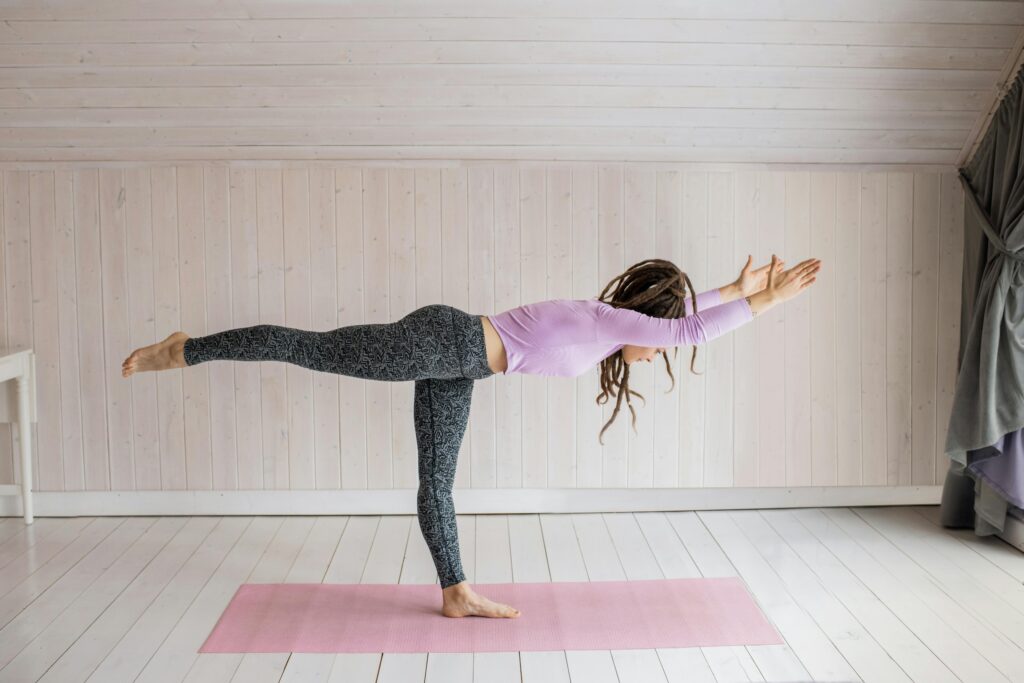
Yoga is far more than just stretching or exercise. It’s a 5,000-year-old practice that originated in India and combines physical postures (asanas), controlled breathing (pranayama), and meditation to create union between body, mind, and spirit. Each yoga pose serves a specific purpose, from twisting postures that aid digestion to inversions that improve circulation and balance poses that build mental focus alongside physical stability.
The physical benefits are extensive: improved flexibility, increased muscle strength and tone, better cardiovascular health, enhanced athletic performance, and protection from injury. But yoga’s mental and emotional benefits are equally powerful. The practice activates your parasympathetic nervous system, triggering your body’s relaxation response and counteracting the effects of chronic stress. Regular practitioners report better sleep, reduced anxiety, improved mood, and greater self-acceptance.
You don’t need to be flexible or fit to start yoga. Beginner-friendly styles like Hatha or Yin yoga move slowly and emphasize proper alignment. As you progress, you might explore more dynamic styles like Vinyasa or Power Yoga. Even a simple 10-minute morning routine of sun salutations can transform your day by increasing blood flow, lubricating joints, and centering your mind before the demands of daily life begin.
3. Aromatherapy
Aromatherapy harnesses the therapeutic properties of essential oils extracted from plants, flowers, bark, stems, and roots. When you inhale these concentrated plant essences, molecules travel through your olfactory system directly to your limbic system, the part of your brain that controls emotions, memories, and certain automatic responses like heart rate and breathing. This is why a particular scent can instantly transport you to a specific memory or shift your emotional state.
Different essential oils offer distinct benefits. Lavender is perhaps the most versatile, promoting relaxation, reducing anxiety, improving sleep quality, and even helping heal minor burns and insect bites. Peppermint energizes the mind, relieves headaches, soothes digestive issues, and clears congested airways. Eucalyptus acts as a natural decongestant and has antimicrobial properties. Tea tree oil fights bacteria and fungi, making it excellent for skin issues. Frankincense reduces inflammation and promotes feelings of peace and spiritual connection. Citrus oils like lemon and sweet orange uplift mood and boost energy.
You can incorporate aromatherapy through diffusers that disperse oils into the air, by adding drops to your bath, creating personal inhalers, or diluting them with carrier oils like jojoba or coconut for massage and topical application. Always research proper dilution ratios and safety precautions, as essential oils are highly concentrated and can cause skin irritation or allergic reactions if used improperly. Pregnant women and people with certain health conditions should consult healthcare providers before using essential oils.
4. Herbal Medicine
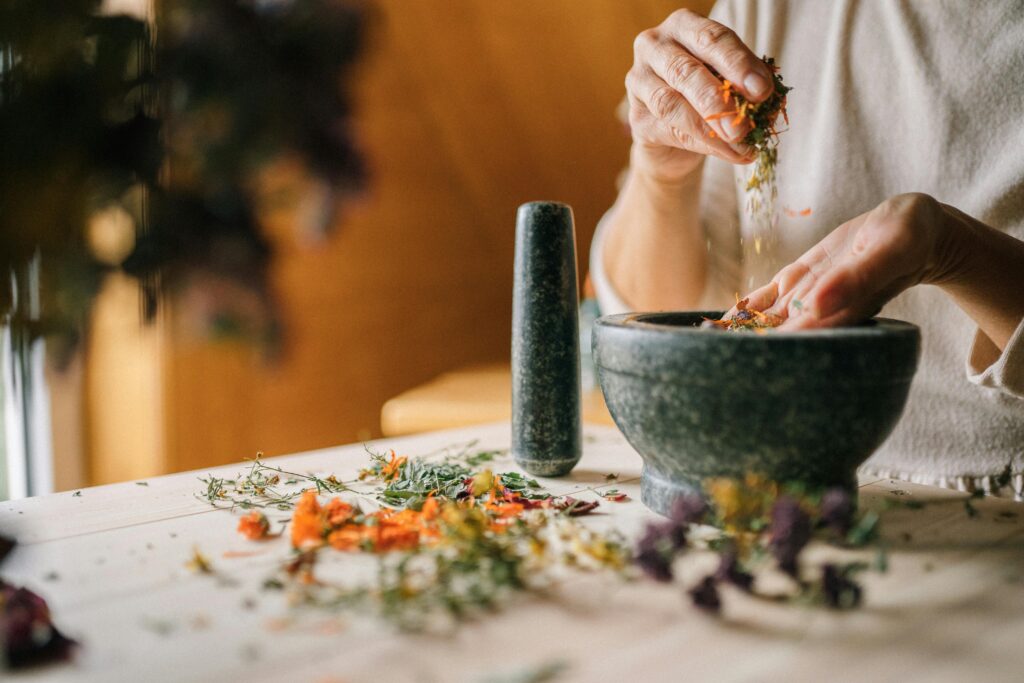
Plants have been humanity’s primary medicine for millennia, and many modern pharmaceuticals are derived from plant compounds. Herbal medicine uses whole plants or plant parts to prevent and treat illness, support body systems, and maintain optimal health. Unlike isolated pharmaceutical compounds, whole plant remedies contain multiple active ingredients that work synergistically, often producing fewer side effects.
Chamomile is a gentle herb perfect for beginners. Its tea calms anxiety, promotes restful sleep, soothes upset stomachs, and reduces inflammation. Ginger is a powerful anti-inflammatory that combats nausea, supports digestion, relieves muscle pain, and may help regulate blood sugar. Turmeric contains curcumin, one of nature’s most potent anti-inflammatory compounds, which supports joint health, brain function, and cardiovascular wellness. Ashwagandha is an adaptogenic herb that helps your body manage stress, balances hormones, improves energy, and supports immune function. Holy basil (tulsi) reduces stress and anxiety while supporting respiratory health and cognitive function.
You can incorporate herbs through teas, tinctures, capsules, or by adding fresh and dried herbs to your cooking. Keep in mind that “natural” doesn’t automatically mean “safe.” Herbs can interact with medications, affect hormone levels, and cause allergic reactions. Research thoroughly, start with small amounts, and work with a qualified herbalist or naturopathic doctor, especially if you’re taking prescription medications or managing chronic health conditions.
5. Acupuncture and Acupressure
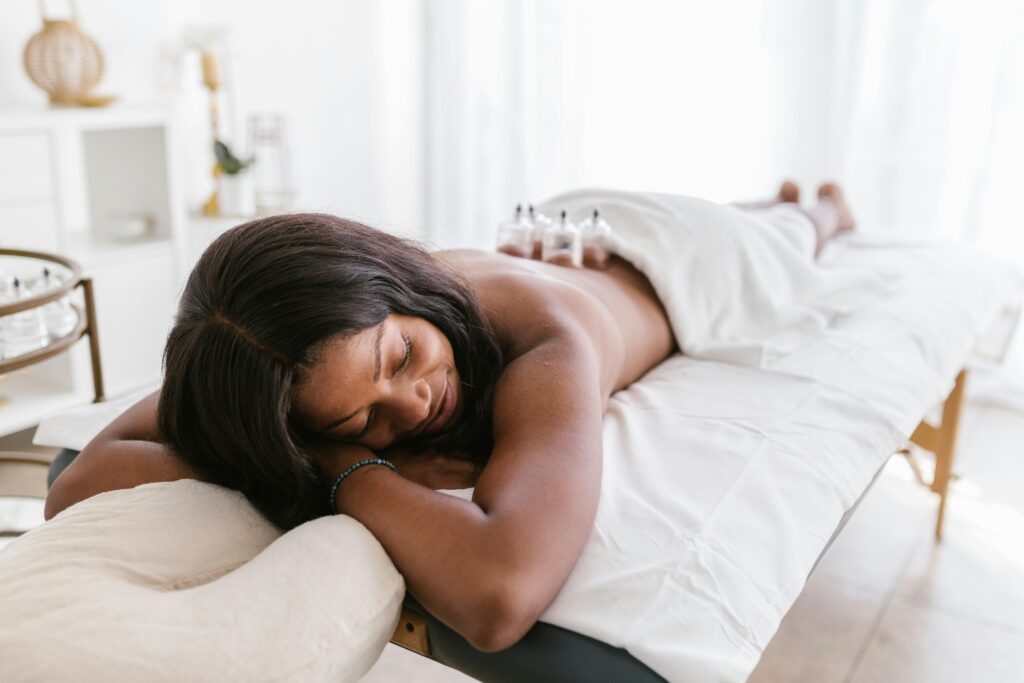
Traditional Chinese Medicine views the body as a network of energy pathways called meridians through which life force energy (qi or chi) flows. When this energy becomes blocked or imbalanced, illness and discomfort result. Acupuncture and acupressure work by stimulating specific points along these meridians to restore proper energy flow and activate the body’s natural healing abilities.
Acupuncture involves inserting extremely thin, sterile needles into precise points on the body. Despite involving needles, most people find the treatment relaxing rather than painful. The insertions typically feel like a small pinch or produce a dull, heavy sensation that practitioners call “de qi.” Research shows acupuncture effectively treats chronic pain, migraines, arthritis, anxiety, depression, insomnia, digestive issues, and even supports fertility treatments. Sessions usually last 30-60 minutes, and you may need multiple treatments to experience full benefits.
Acupressure applies the same principles without needles, using finger pressure, massage, or specialized tools to stimulate healing points. You can practice acupressure on yourself once you learn key points. For example, pressing the point between your thumb and index finger (LI4) relieves headaches and general pain. The point on your inner wrist, about three finger-widths below your palm (P6), reduces nausea and anxiety. The “third eye” point between your eyebrows calms the mind and promotes mental clarity. Acupressure offers a free, accessible way to manage various symptoms between professional acupuncture sessions.
6. Forest Bathing (Shinrin-yoku)
Developed in Japan during the 1980s, forest bathing (shinrin-yoku) is the practice of immersing yourself in nature through all your senses. This isn’t hiking or exercise; it’s about slowing down, being present, and allowing the forest atmosphere to wash over you. Scientific research validates what many intuitively know: spending time in nature profoundly benefits both physical and mental health.
When you walk through a forest, trees release organic compounds called phytoncides, which they use to protect themselves from insects and disease. When you breathe these compounds, they boost your immune system by increasing natural killer cell activity, which helps your body fight infections and even cancer cells. Studies show that just two hours of forest bathing can lower cortisol levels, reduce blood pressure, decrease heart rate, improve mood, reduce fatigue, increase energy, and enhance creativity and problem-solving abilities.
Forest bathing requires no special skills or equipment. Find a natural area with trees, whether a forest, park, or wooded trail. Leave your phone on silent or at home. Walk slowly without a destination, stopping frequently to observe your surroundings. Notice the play of light through leaves, the texture of bark, the sounds of birds and rustling branches, the scent of earth and vegetation, the feeling of air on your skin. Touch trees, sit on the ground, and let yourself simply be rather than do. Practice for at least 20 minutes, though longer sessions amplify benefits. If you don’t have access to forests, any green space provides similar advantages.
7. Breathwork
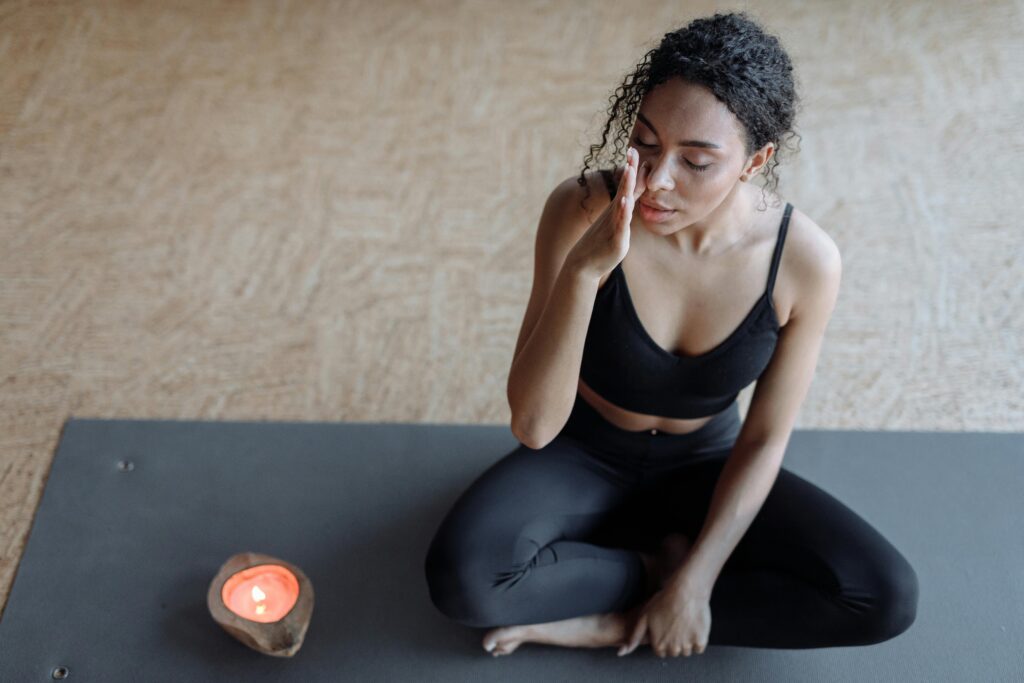
Breath is the bridge between your conscious and unconscious mind, and learning to control it unlocks powerful healing potential. Every emotional state has a corresponding breathing pattern. When anxious, your breath becomes shallow and rapid; when calm, it’s slow and deep. By consciously changing your breathing, you can shift your emotional and physical state almost instantly.
Different breathwork techniques serve different purposes. Box breathing (inhaling for four counts, holding for four, exhaling for four, holding for four) calms the nervous system and is used by Navy SEALs to maintain composure under pressure. Alternate nostril breathing balances the left and right hemispheres of your brain, reduces anxiety, and prepares you for meditation. Diaphragmatic breathing, where you breathe deeply into your belly rather than your chest, activates your vagus nerve and triggers your relaxation response. Energizing breath techniques like kapalabhati (rapid forceful exhales) increase alertness and clear mental fog.
Breathwork can also facilitate emotional release and spiritual experiences. Practices like holotropic breathwork and rebirthing use extended sessions of controlled breathing to access non-ordinary states of consciousness, process trauma, and gain insights. These intensive practices should be done with trained facilitators. For daily practice, start with just five minutes of conscious breathing. The 4-7-8 technique (inhale for four counts, hold for seven, exhale for eight) is excellent for reducing anxiety and promoting sleep. Practicing breathwork regularly trains your nervous system to respond more calmly to stress.
8. Sound Healing
Sound healing uses vibration to bring the body’s energy systems back into harmony. Everything in the universe vibrates at specific frequencies, including the cells, organs, and systems in your body. When these frequencies become disrupted by stress, illness, or negative emotions, sound healing can help restore proper resonance.
Singing bowls, typically made from crystal or metal alloys, produce rich, harmonic overtones when struck or circled with a mallet. These vibrations penetrate deeply into the body, promoting relaxation and meditation. Tuning forks calibrated to specific frequencies can be placed on or near the body to address particular issues. For example, a 528 Hz frequency is called the “love frequency” and is believed to promote healing and repair DNA. Gongs create powerful, enveloping soundscapes that can induce deep meditative states and release energetic blockages.
Other sound healing modalities include chanting and mantras, which use your own voice as a healing instrument. The vibration of sound in your throat and chest during chanting calms the vagus nerve and focuses the mind. Binaural beats deliver slightly different frequencies to each ear through headphones, causing your brain to perceive a third frequency that can induce specific mental states, from deep relaxation to enhanced focus. Even listening to music with healing intentions, whether classical, ambient, or nature sounds, supports emotional wellbeing and stress reduction. Sound baths, where participants lie down while practitioners play various instruments, have become popular ways to experience sound healing’s benefits without needing special equipment or training.
9. Reiki and Energy Healing

Reiki is a Japanese energy healing technique based on the principle that a universal life force energy flows through all living things. When this energy is strong and flowing freely, we experience health and vitality. When it becomes blocked or depleted, we experience illness and malaise. Reiki practitioners act as channels for universal energy, directing it through their hands to the recipient to promote healing on physical, emotional, mental, and spiritual levels.
During a Reiki session, you remain fully clothed while lying comfortably on a massage table. The practitioner places their hands lightly on or just above various positions on your body, typically starting at your head and moving down to your feet. You might experience sensations of warmth, tingling, or deep relaxation. Many people enter meditative states or even fall asleep during sessions. Reiki promotes stress reduction, pain relief, emotional release, improved sleep, and enhanced overall wellbeing.
While Reiki requires attunement from a Reiki master to practice professionally, you can learn to use Reiki on yourself for self-care. The beauty of energy healing is that intention matters as much as technique. You can practice simple energy healing by rubbing your hands together to activate your palms’ energy centers, then placing them on areas of your body that need attention while holding the intention of healing and wellbeing. Other energy healing modalities include Healing Touch, Quantum Touch, and Pranic Healing, each with slightly different approaches but similar underlying principles about working with the body’s energy field.
10. Hydrotherapy
Humans have used water for healing throughout history, from ancient Roman baths to Japanese onsen to modern spas. Hydrotherapy uses water at various temperatures and pressures to improve circulation, reduce inflammation, detoxify the body, and promote relaxation. Water’s unique properties allow it to transfer heat efficiently, support body weight, and provide resistance, making it ideal for both healing and prevention.
Contrast hydrotherapy alternates between hot and cold water to stimulate circulation and boost immune function. The heat causes blood vessels to dilate, bringing more blood to the surface, while cold causes them to constrict, pushing blood to your internal organs. This pumping action improves overall circulation, helps eliminate metabolic waste, and may reduce inflammation. Try ending your morning shower with 30 seconds to two minutes of cold water, or alternate between hot and cold in intervals.
Epsom salt baths combine hydrotherapy with the benefits of magnesium sulfate. Soaking in warm water with Epsom salts helps relieve muscle tension, reduce inflammation, improve sleep, and calm the nervous system. Add essential oils for aromatherapy benefits. Cold plunges or ice baths, popular among athletes, reduce inflammation and muscle soreness after intense physical activity. Float therapy or sensory deprivation tanks, where you float in body-temperature water saturated with Epsom salt, create a unique environment for deep relaxation, meditation, and even altered states of consciousness by removing external stimuli.
Water’s healing properties also extend to simply being near it. Research shows that being around water, whether oceans, lakes, rivers, or fountains, reduces stress and promotes feelings of wellbeing. The negative ions produced by moving water may contribute to improved mood and energy levels.
11. Tai Chi and Qigong
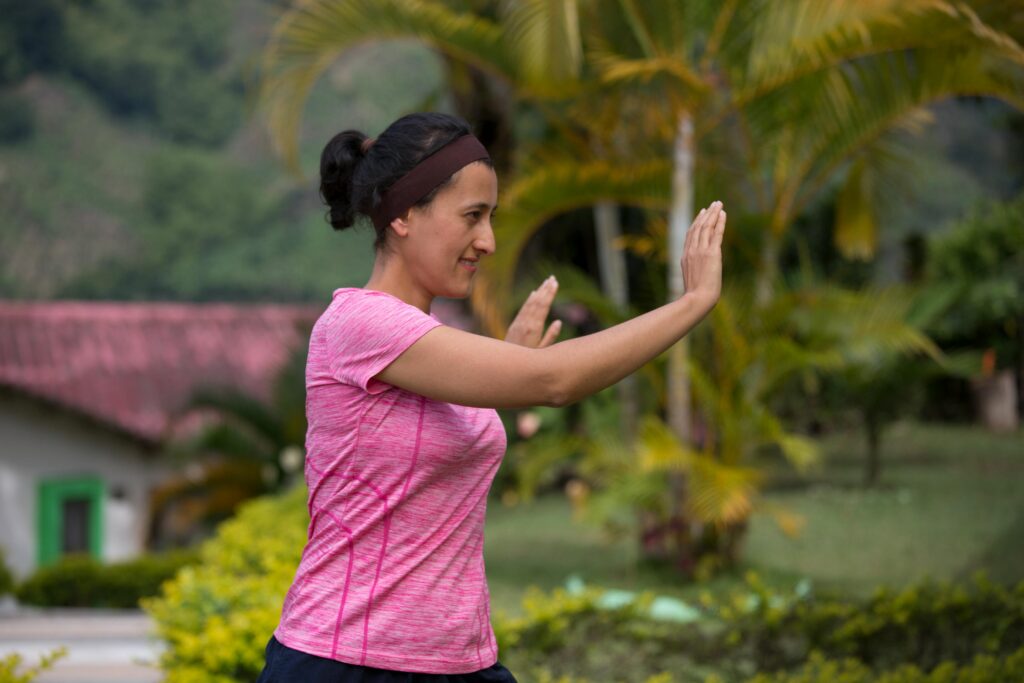
These ancient Chinese movement practices combine gentle flowing movements, focused breathing, and meditation to cultivate and balance life force energy (qi). Often described as “meditation in motion,” both practices are accessible to people of all ages and fitness levels, requiring no special equipment and carrying minimal risk of injury.
Tai Chi originated as a martial art but has evolved into a practice focused on health and wellbeing. Its slow, graceful movements flow from one to the next while maintaining perfect balance and body alignment. Each movement has martial applications, but modern practice emphasizes the meditative quality and health benefits. Regular Tai Chi practice improves balance and coordination, reducing fall risk in older adults. It builds leg strength, enhances flexibility, reduces stress and anxiety, lowers blood pressure, improves cardiovascular fitness, and helps manage chronic pain conditions like arthritis and fibromyalgia.
Qigong predates Tai Chi and focuses more explicitly on cultivating and circulating qi through specific postures, movements, breathing techniques, and meditation. Some Qigong practices are dynamic and flowing, while others involve holding still postures while visualizing energy movement. Medical Qigong is used in Chinese hospitals alongside conventional treatments for various conditions. Regular practice strengthens immunity, increases energy and vitality, improves mental clarity, promotes emotional balance, and supports the body’s natural healing processes.
Both practices embody the principle of “less is more.” The movements appear simple but require focused attention to alignment, breathing, and energy awareness. This makes them perfect for busy modern lives; even 10-15 minutes of daily practice produces noticeable benefits. Many community centers, senior centers, and parks offer free or low-cost classes, or you can follow along with videos at home.
12. Journaling and Expressive Writing
Writing is a powerful tool for processing emotions, gaining clarity, and promoting psychological healing. When you write about your thoughts and feelings, particularly difficult experiences, you create distance between yourself and your emotions, allowing you to observe and understand them rather than being overwhelmed. Research shows that expressive writing improves immune function, reduces blood pressure, decreases symptoms of depression and anxiety, improves sleep, and even helps physical wounds heal faster.
There are many approaches to therapeutic journaling. Stream-of-consciousness writing involves setting a timer for 10-20 minutes and writing continuously without editing or censoring yourself. This helps bypass your inner critic and access deeper thoughts and feelings. Gratitude journaling, where you regularly write about things you’re thankful for, shifts your focus from problems to blessings and has been shown to increase happiness and life satisfaction. Morning pages, popularized by Julia Cameron, involve writing three pages longhand first thing each morning to clear mental clutter and access creativity.
Prompted journaling uses specific questions to guide your reflection: “What am I feeling right now and where do I feel it in my body?” “What would I do if I weren’t afraid?” “What do I need to forgive myself for?” “What brought me joy this week?” You can also use journaling to dialogue with different parts of yourself, writing from the perspective of your inner critic, inner child, or wise self to gain multiple viewpoints on situations.
The key is consistency rather than perfection. Your journal is private and doesn’t need to be eloquent or grammatically correct. Let it be messy, honest, and raw. Many people find that writing by hand, rather than typing, creates a stronger connection between mind and emotions. Keep your journal somewhere easily accessible and commit to writing regularly, even if just for five minutes.
13. Mindful Movement and Dance
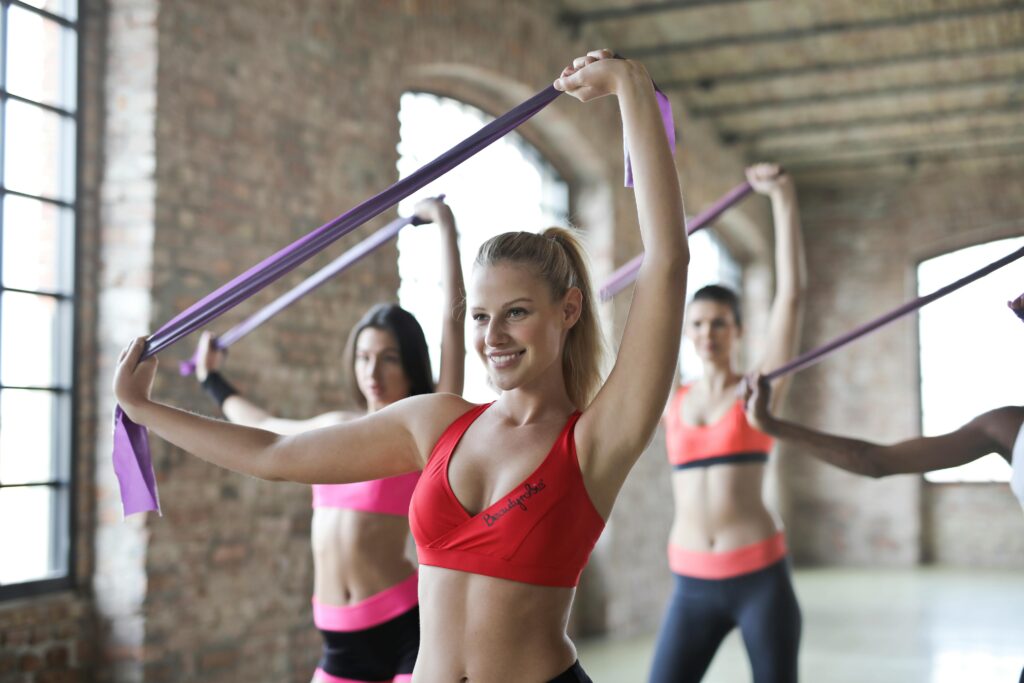
Movement is medicine, but not all movement serves the same purpose. While structured exercise focuses on physical fitness, mindful movement emphasizes the connection between body, mind, emotions, and spirit. It’s about moving with awareness and intention, allowing your body’s wisdom to guide you rather than following rigid routines or pushing through pain.
Dance as a healing practice doesn’t require skill, lessons, or an audience. Ecstatic dance, 5Rhythms, soul motion, and other conscious dance practices create safe, judgment-free spaces where people move spontaneously to music, expressing and releasing emotions through their bodies. This type of movement accesses parts of your experience that words cannot reach. Shaking, swaying, spinning, jumping, or flowing, you allow your body to tell its story and release stored tension and trauma.
Other mindful movement practices include walking meditation, where you walk slowly while maintaining full awareness of each step and the sensations in your body; intuitive movement, where you check in with your body and move in whatever way it needs in that moment; and somatic practices like Feldenkrais or Alexander Technique, which use gentle movement to retrain nervous system patterns and release chronic tension.
The benefits of mindful movement extend beyond physical fitness. These practices improve body awareness and help you recognize tension, emotions, and needs earlier. They release trauma and stress stored in tissues and fascia. They reconnect you with joy and playfulness. They build confidence and self-acceptance by honoring your body’s unique expression rather than comparing yourself to others or striving for external standards.
You can incorporate mindful movement into your daily life without setting aside special time. Stretch intuitively throughout your day, paying attention to what your body asks for. Put on music and dance while cooking or cleaning. Take movement breaks where you shake out tension or flow through a few spontaneous poses. The key is presence. Whatever movement you choose, bring your full attention to the sensations, emotions, and energy moving through your body.
Holistic healing recognizes what ancient wisdom traditions have always known: true wellness encompasses the whole person, not just the absence of disease. These 13 practices offer doorways into deeper health, greater vitality, and more profound peace. The beauty of holistic approaches is that they work synergistically; combining several practices amplifies the benefits of each. You might start your day with meditation and yoga, take a mindful walk in nature during lunch, use aromatherapy and breathwork to manage afternoon stress, and journal before bed while sipping herbal tea.
Remember that wellness is a journey, not a destination. Start small by choosing one or two practices that resonate with you and commit to them for at least a month before adding others. Listen to your body and honor what it needs in each moment. Some days you’ll crave vigorous movement; other days gentle stretching feels right. Some weeks you’ll faithfully maintain all your practices; other weeks you’ll do the bare minimum, and that’s okay.
These practices are not substitutes for professional medical care when needed, but they are powerful complements that address the root causes of many modern ailments: chronic stress, disconnection from nature, sedentary lifestyles, and the neglect of emotional and spiritual needs. By weaving these holistic healing practices into the fabric of your daily life, you take your wellbeing into your own hands, becoming an active participant in your health rather than a passive recipient of treatment. The path to wellness is walked one mindful step at a time, and every small choice toward greater balance and wholeness counts. Your body is wise, your spirit is resilient, and your capacity for healing is far greater than you might imagine. Begin wherever you are, with whatever practice calls to you, and trust the journey.
